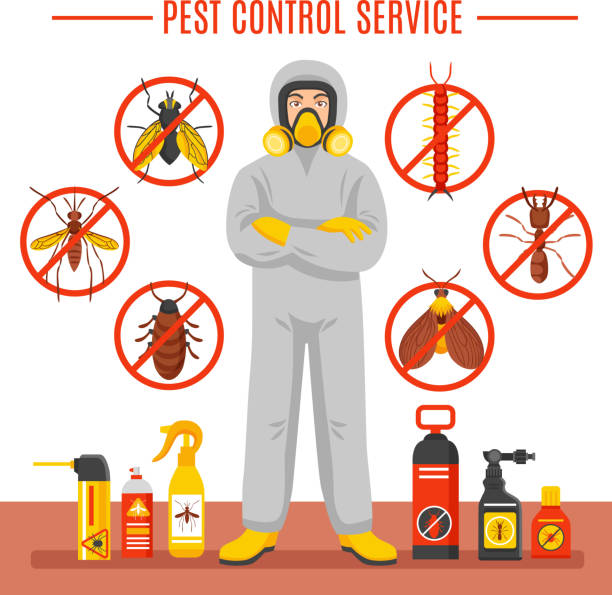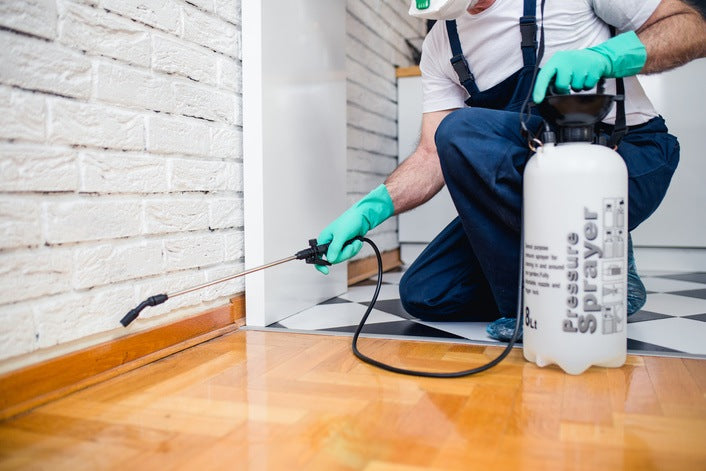Discovering Invasion and Therapy Methods in the World of Parasite Control
The landscape of bug control includes a myriad of obstacles, specifically as invasions of common family pests remain to develop. Recognizing the habits and reproductive patterns of these nuisances is vital for developing reliable treatment methods. By integrating safety nets with sophisticated management methods, such as Integrated Pest Administration (IPM), home owners can better guard their environments. The performance of these methods may vary dramatically based on specific scenarios. What hidden factors contribute to the success or failure of these methods in various settings?

Usual House Vermin
When it comes to managing our home, comprehending typical family bugs is critical. These pests not only disrupt our convenience but can also pose health risks and damages property. The most widespread house parasites consist of ants, roaches, rats, termites, and bed insects.
Ants, commonly seen foraging in kitchen areas, can pollute food and establish large colonies. Roaches, recognized for their strength, can activate allergies and spread pathogens. Rats, consisting of computer mice and rats, can cause structural damages and bring illness like hantavirus and salmonella. Termites, typically referred to as "quiet destroyers," can compromise the stability of wooden structures, resulting in costly repair work. Bed bugs, although not disease service providers, can trigger significant pain with their bites and lead to emotional distress.
Acknowledging the indicators of these bugs, such as droppings, nests, or bite marks, is crucial for early treatment (Pest Control Lockhart). Appropriate sanitation methods, sealing entrance points, and preserving a clutter-free environment are efficient preventative measures. By recognizing these common family insects and recognizing their behaviors, home owners can take proactive actions to mitigate invasions, ensuring a much healthier living setting
Comprehending Bug Infestations
Pest invasions can rise rapidly, transforming a minor inconvenience right into a significant issue otherwise addressed quickly. Recognizing the nature of these infestations is important for effective administration. Parasites can attack domestic and industrial rooms for numerous reasons, including the look for food, shelter, or breeding premises. Usual factors adding to invasions consist of inadequate hygiene, architectural vulnerabilities, and seasonal changes that drive insects inside your home.
Determining the kind of bug is necessary, as various types display different behaviors and reproductive rates. Rats might establish nests in covert areas while pests like roaches prosper in moist atmospheres. Early detection often rests on identifying indications such as droppings, nibble marks, or unusual audios, which can suggest a problem before it ends up being serious.
Environmental conditions also play a vital duty in bug proliferation. Cozy, damp climates can promote the fast growth of parasite populaces, while modifications in landscaping or building and construction can unintentionally create helpful atmospheres. Regular examinations and preventative steps are extremely important to alleviating the threat of invasions. An informed technique to understanding these dynamics lays the foundation for efficient parasite administration approaches in the future.
Therapy Approaches and Techniques
Efficient therapy approaches and techniques are vital for alleviating parasite infestations and bring back a risk-free setting. A multifaceted method is commonly best, including chemical, organic, and mechanical strategies customized to the particular insect and the intensity of the problem.
Chemical therapies consist of the usage of pesticides and herbicides, which can properly eliminate pests. Appropriate application and adherence her comment is here to security view it guidelines are important to reduce dangers to humans and non-target organisms. Integrated Pest Management (IPM) urges the wise usage of chemicals as a last resource, depending instead on monitoring and threshold degrees to establish treatment requirements.
Organic control methods entail presenting natural killers or parasites to lower bug populations. This strategy is progressively popular, especially in agricultural setups, as it promotes ecological sustainability.
Mechanical techniques, such as catches and barriers, give instant relief from bugs without introducing chemicals. Choices consist of sticky traps for pests or physical barriers for rats.
Ultimately, the selection of treatment approach should take into consideration the specific parasite, the atmosphere, and possible effect on human health and communities. A well balanced combination of these methods can effectively handle problems while promoting long-lasting parasite control services.
Preventative Measures for House
Proactively resolving pest problems prior to they escalate is important for preserving a healthy and balanced home environment (Pest Control Lockhart). Executing efficient preventative measures can dramatically reduce the possibility of problems, inevitably safeguarding both your residential property and health

Appropriate landscaping likewise plays a vital function in prevention. Keeping shrubs and trees trimmed away from your home reduces the opportunities of parasites locating their method inside your home. Additionally, guarantee that drainage systems are functioning successfully to protect against standing water, which can attract insects and other insects.
Finally, routine inspections are suggested. Consistently looking for signs of pest task permits early treatment. By adopting these preventative procedures, property owners can create a setting that is less friendly to bugs, thus boosting their general quality of life and minimizing the need for considerable insect control treatments.
Industrial Pest Control Methods
A comprehensive strategy to commercial bug control is vital for organizations aiming to keep a safe and sanitary environment. Efficient approaches include a mix of regular assessments, staff member training, and the implementation of Integrated Bug Management (IPM) methods.
Normal inspections allow very early detection of insect task, enabling timely intervention. Organizations should establish a regular timetable for these assessments, concentrating on high-risk locations such as cooking areas, storeroom, and waste disposal websites. Staff member training is equally essential; personnel needs to be informed on the indications of bug invasions and the relevance of reporting them instantly.
Carrying out IPM techniques aids mitigate More Bonuses pest problems sustainably. This includes habitat adjustment, such as sealing entrance factors and minimizing mess, along with using all-natural deterrents prior to considering chemical therapies.

In addition, teaming up with a qualified pest control service provider guarantees access to expert knowledge and advanced therapy alternatives. This collaboration can cause personalized bug control prepares tailored to the specific demands of the organization, decreasing threats and improving general efficacy. Ultimately, an aggressive and enlightened technique fosters a pest-free environment, guarding both public wellness and company credibility.
Conclusion
In final thought, reliable insect control demands a comprehensive understanding of usual house pests and their habits, paired with targeted treatment techniques. Implementing precautionary actions alongside treatment methods such as Integrated Pest Administration and organic control boosts the ability to alleviate problems.
Comments on “Reliable Solutions for Rodents and Bugs from Pest Control Lockhart”